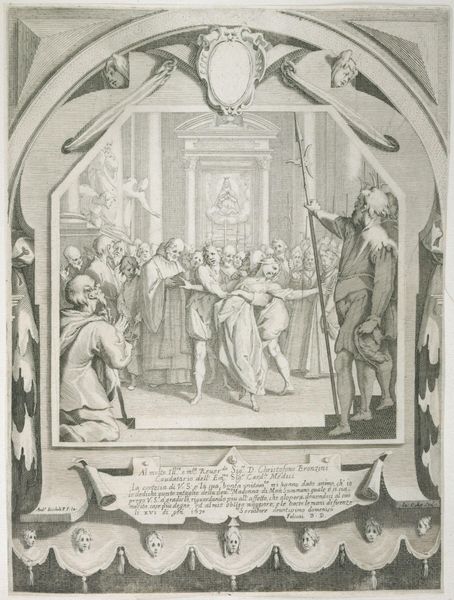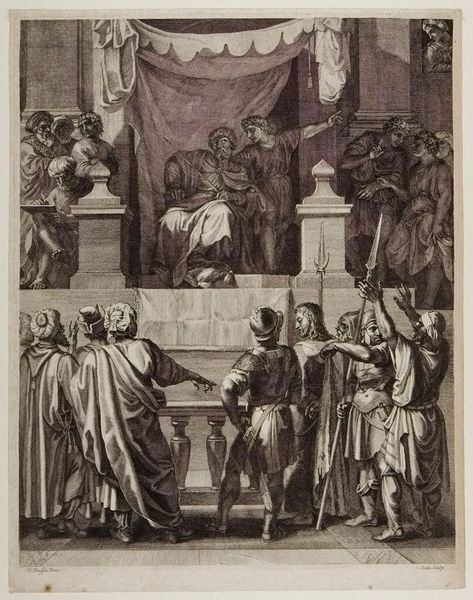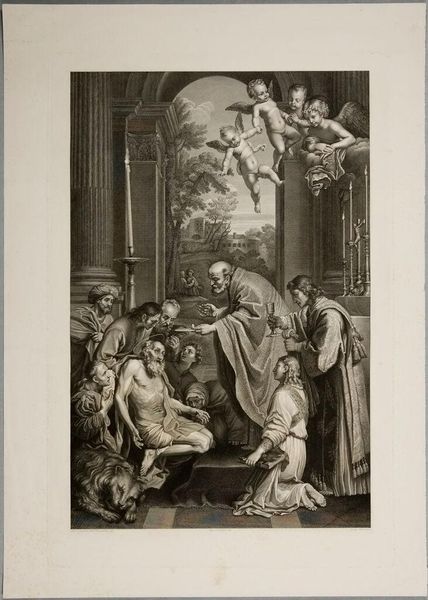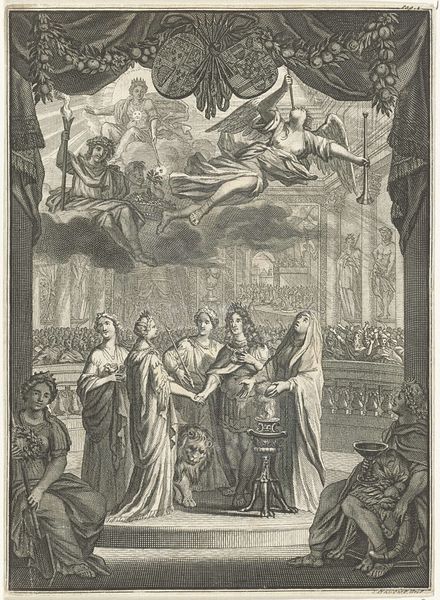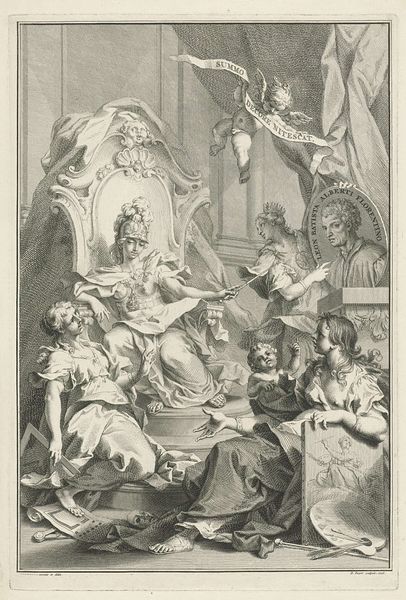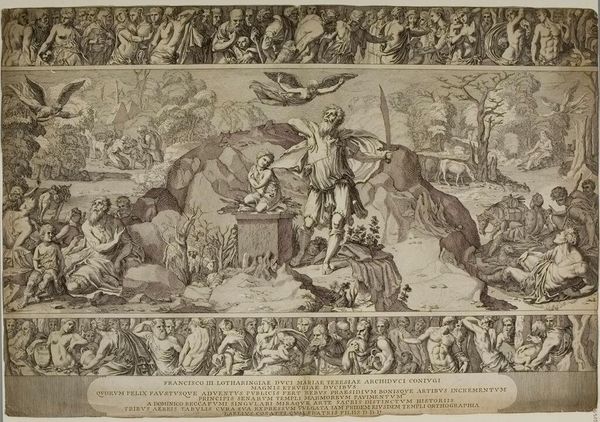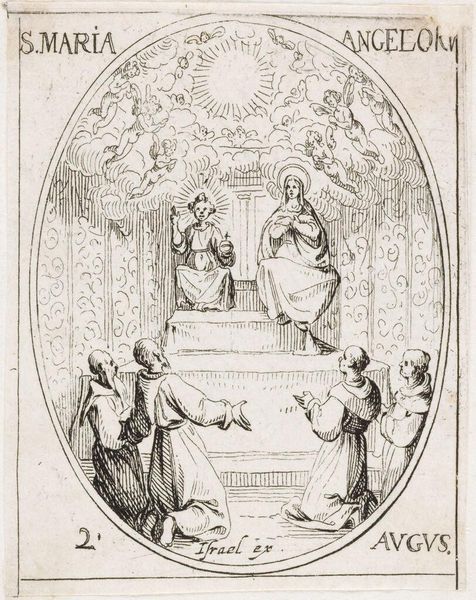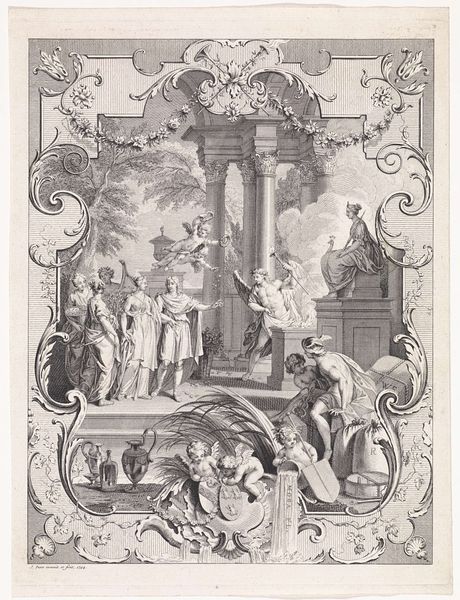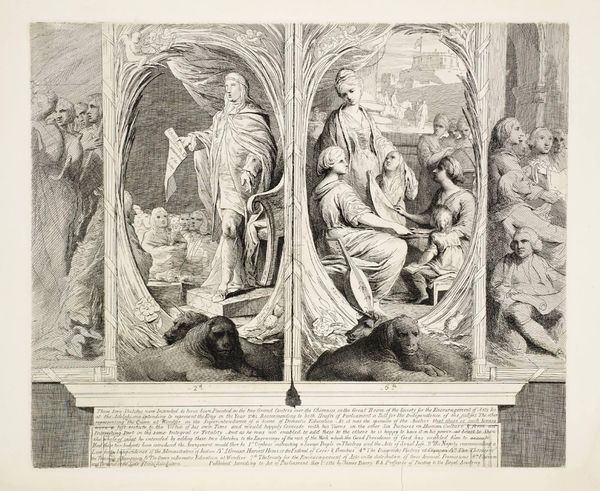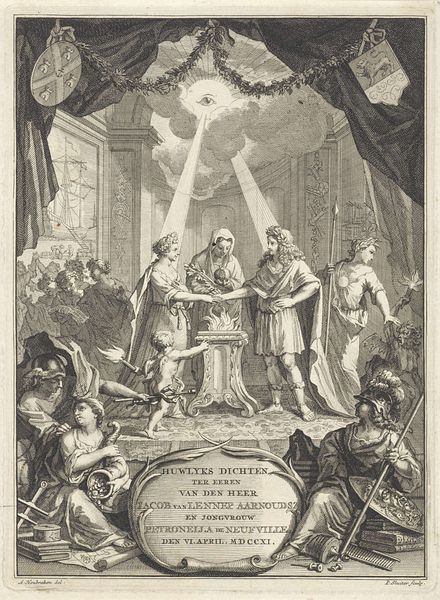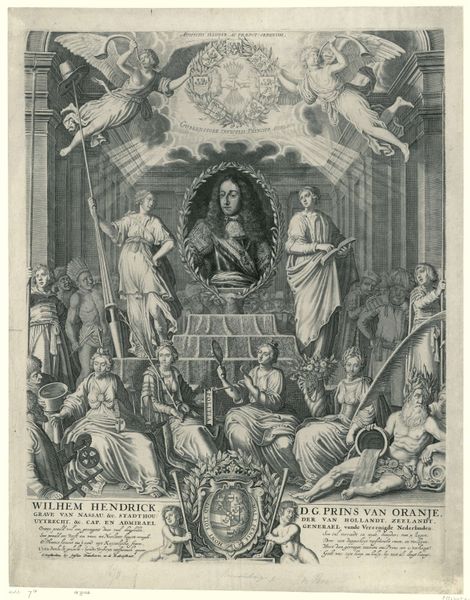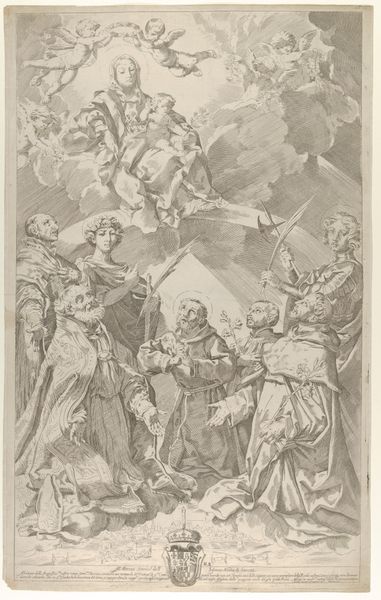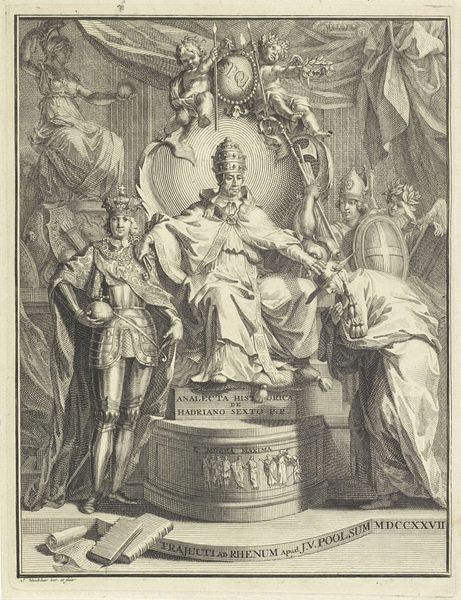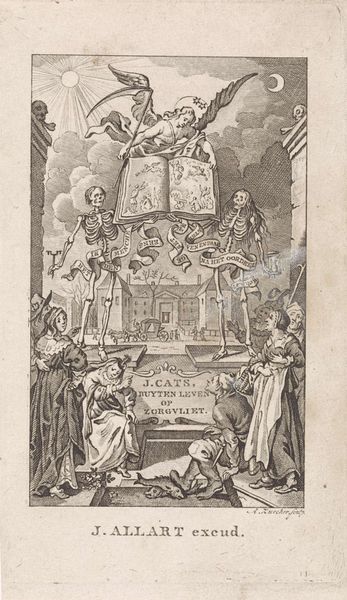
Sophronia's Defiance (from a set of Scenes from Gerusalemme Liberata) 1689 - 1739
0:00
0:00
weaving, textile, sculpture
#
narrative-art
#
baroque
#
sculpture
#
weaving
#
textile
#
charcoal drawing
#
figuration
#
form
#
sculpture
#
black and white
#
line
#
history-painting
#
decorative-art
Dimensions: 12 ft. 4 in. × 10 ft. 6 in. (375.9 × 320 cm)
Copyright: Public Domain
Curator: This baroque weaving, conceived between 1689 and 1739, is titled "Sophronia's Defiance" and is inspired by episodes in Tasso's "Gerusalemme Liberata." Domenico Paradisi is credited with its design. Editor: Immediately, the visual weight of this scene is arresting—the tapestry seems to trap you between raw human drama and stylized decorativeness, doesn't it? You can practically feel the heroine's resistance vibrating off the woven threads. Curator: It's interesting you pick up on the resistance so strongly. Sophronia embodies sacrifice. Here, she takes the blame for a crime she didn’t commit to save the Christian community from persecution. Notice the raised stage, and the framing devices within the composition. They borrow symbolic forms of theater. Editor: Exactly! She’s a figure stepping into a historically loaded narrative—the woman who sacrifices herself for the community. I see echoes of Antigone, of Christ... But the framing also highlights how such figures are *used,* often to reinforce societal power dynamics and religious ideologies. Curator: I agree with that assessment. The tapestry almost transforms this moment of defiance into an iconographic scene. Sophronia, positioned below the stern gaze of authority, and flanked by enforcers. What are we meant to glean from such composition choices, I wonder? What psychological purpose does that hierarchy achieve in viewers across eras? Editor: The artist really plays with those ambiguities! The black and white color palette heightens the emotional stakes while also turning the whole image into a stark, almost propagandistic statement. And given the timeframe—late 17th to early 18th century—how does this narrative weaving perform within European constructions of the "Other," vis-à-vis the Crusades? Curator: Yes, the tapestry form itself, being easily transported and displayed, would have amplified its storytelling ability within private European courts and parlors, certainly shaping understanding about those clashes. These depictions were vital in visualizing histories and creating legacies of cultural power, and were thus potent cultural technologies. Editor: It's been fascinating to unpick the threads, as it were, and see the layered complexities in representing defiance, power, and the lasting impacts of historical narrative. Curator: Indeed. It truly exemplifies the weaving together of cultural memory and aesthetic statement.
Comments
No comments
Be the first to comment and join the conversation on the ultimate creative platform.
